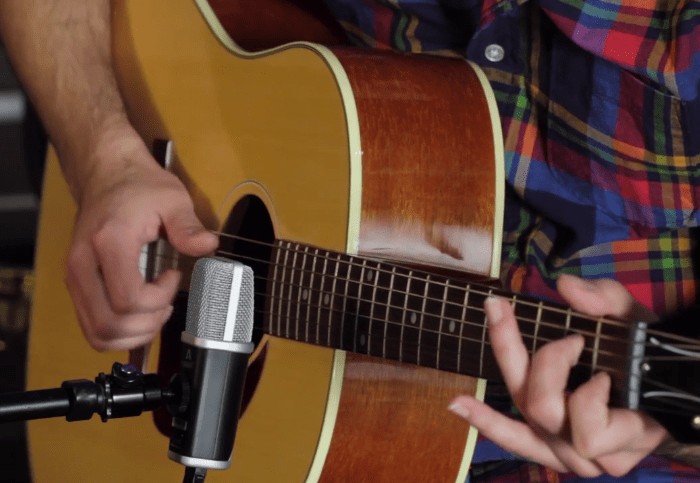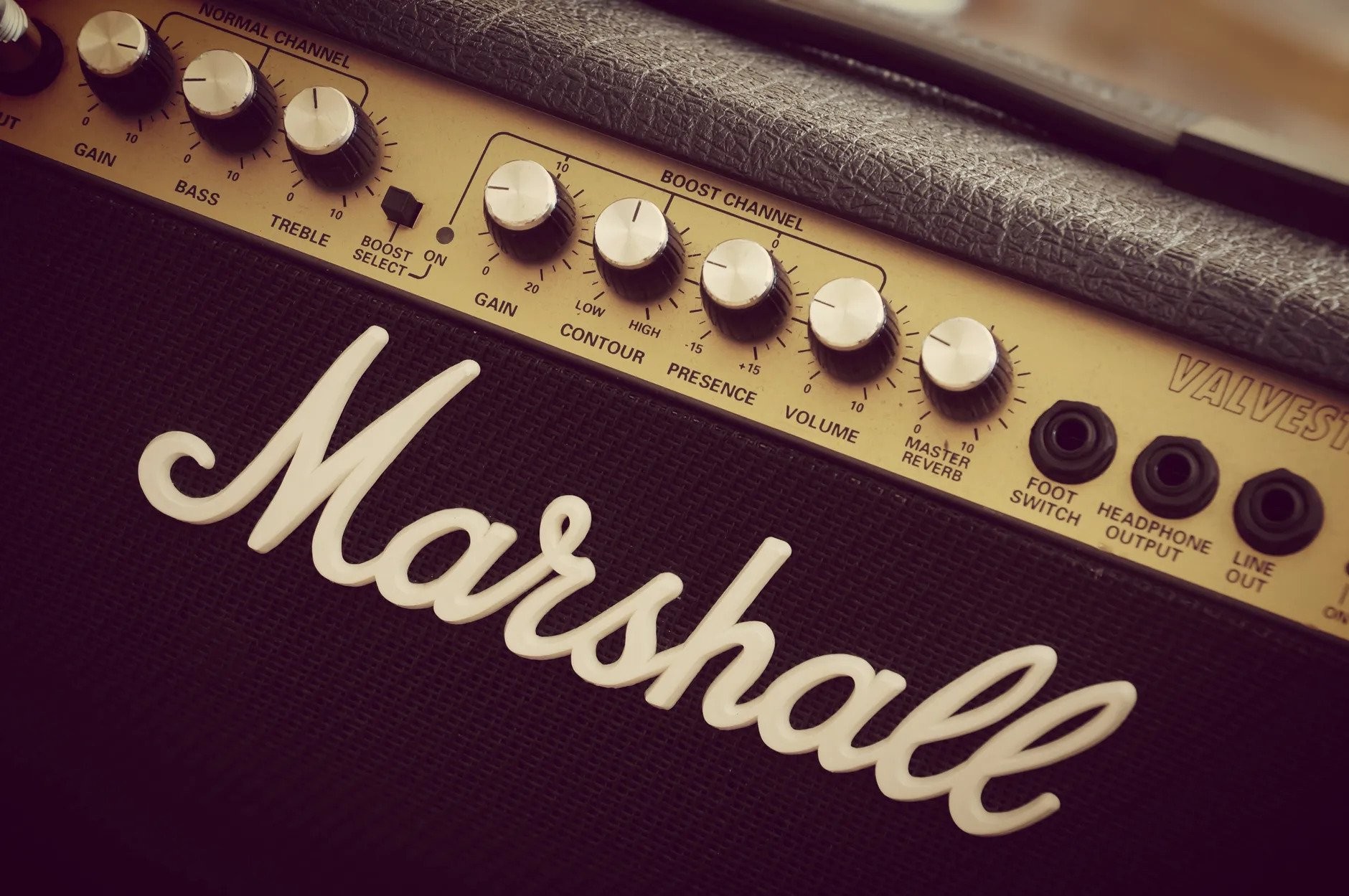Can A Beginner Learn Electric Guitar, or is it better to start with an acoustic? At LEARNS.EDU.VN, we believe anyone can master the electric guitar with the right approach and resources. Discover the truth, dispel common myths, and start your electric guitar journey confidently with our comprehensive guide. Learn about fundamental techniques, effective practice methods, and the joy of creating music with an electric guitar.
1. Debunking Common Myths About Learning Electric Guitar
Many misconceptions surround starting with an electric guitar. Let’s debunk some of the most prevalent myths to clear the path for aspiring guitarists.
1.1. Myth: You Must Learn on Acoustic Guitar First
The idea that beginners should start with an acoustic guitar before transitioning to electric is a common belief. Proponents argue that acoustic guitars require more finger strength and precision, thus building a solid foundation. However, this isn’t necessarily true for everyone. Starting with electric guitar can be equally effective, and in some cases, more enjoyable for beginners.
- Finger Strength: While acoustic guitars do require more finger strength, modern electric guitars are designed with lighter gauge strings and lower action, making them easier to play.
- Motivation: If your passion lies in playing electric guitar, starting with an acoustic might dampen your enthusiasm. Motivation is crucial for consistent practice and progress.
- Transferable Skills: The fundamental techniques and chord shapes learned on an electric guitar are easily transferable to an acoustic guitar.
1.2. Myth: Electric Guitars are Always Loud and Require an Amplifier
Another common myth is that electric guitars are inherently loud and require an amplifier to be heard. While it’s true that an amplifier enhances the sound and provides the full electric guitar experience, electric guitars can be played unplugged. Unplugged, they produce a quieter, more subtle sound that’s perfectly suitable for practice.
- Practice Volume: Playing unplugged allows you to practice without disturbing others, making it ideal for apartments or shared living spaces.
- Portability: Without the need for an amplifier, practicing becomes more portable. You can take your electric guitar anywhere and practice silently.
- Focus on Technique: Playing unplugged forces you to focus on your technique and finger placement, as every mistake is more noticeable.
1.3. Myth: You Should Start with a Classical Guitar
Some believe that beginners should start with a classical guitar due to its nylon strings being easier on the fingers. While it’s true that nylon strings are softer than steel strings, classical guitars have a wider neck, which can be challenging for beginners with smaller hands. Additionally, classical guitars are primarily designed for classical and flamenco music, which may not align with your musical interests.
- Neck Width: The wider neck of a classical guitar can make it difficult to form chords, especially for those with smaller hands.
- Musical Style: If you’re interested in playing rock, blues, pop, or other genres, an electric or acoustic guitar is more suitable.
- String Tension: While nylon strings are easier on the fingers initially, they can also feel less responsive compared to steel strings on an electric or acoustic guitar.
2. Why Electric Guitar Can Be Great for Beginners
Despite the myths, electric guitars offer several advantages for beginners. These include ease of play, versatility, and the ability to explore various genres and techniques.
2.1. Lighter Strings and Lower Action
Electric guitars typically have lighter gauge strings and lower action compared to acoustic guitars. This makes the strings easier to press down, reducing finger fatigue and allowing beginners to play for longer periods.
- Reduced Finger Fatigue: Lighter strings require less pressure, making it easier to form chords and play melodies without tiring your fingers.
- Faster Progress: With less effort required to fret notes, beginners can focus on developing proper technique and coordination.
- Increased Playtime: Reduced finger fatigue means you can practice for longer sessions, accelerating your learning progress.
2.2. Versatility in Genres and Styles
Electric guitars are incredibly versatile and can be used to play a wide range of genres, from rock and blues to jazz and pop. This versatility allows beginners to explore different musical styles and find what resonates with them.
- Genre Exploration: Electric guitars are used in countless genres, allowing you to experiment and find your niche.
- Tonal Variety: With various pickups, amplifiers, and effects pedals, electric guitars offer a vast range of tonal possibilities.
- Creative Expression: The versatility of the electric guitar encourages creative expression and allows you to develop your unique sound.
2.3. Easier to Learn Lead Guitar Techniques
Electric guitars are better suited for learning lead guitar techniques such as string bending, vibrato, and tapping. The lighter strings and lower action make these techniques easier to execute, allowing beginners to add flair to their playing.
- String Bending: Bending strings on an electric guitar is easier due to the lighter gauge strings, allowing you to create expressive blues licks and solos.
- Vibrato: Adding vibrato to notes is simpler on an electric guitar, giving your playing a more professional and polished sound.
- Tapping: Tapping, a technique where you use your fretting hand fingers to tap notes on the fretboard, is easier to execute on an electric guitar due to the lighter strings and lower action.
3. Essential Gear for Beginner Electric Guitarists
Starting your electric guitar journey requires more than just the guitar itself. Here’s a list of essential gear that will help you get started:
3.1. Electric Guitar
Choosing the right electric guitar is crucial for beginners. Look for guitars that are comfortable to hold, have a good action, and are within your budget.
| Feature | Importance |
|---|---|
| Body Style | Choose a body style that feels comfortable and balanced when sitting or standing. Common options include Stratocaster, Telecaster, and Les Paul styles. |
| Pickup Type | Humbucker pickups are great for rock and metal, while single-coil pickups are better suited for blues and country. Consider a versatile option to start. |
| Neck Profile | A slim, C-shaped neck is generally easier for beginners to grip and play. |
| Build Quality | Look for a guitar with solid construction and reliable hardware. Check the fretwork and tuning stability. |
| Price Range | Set a budget and stick to it. There are many excellent beginner guitars available at affordable prices. |



3.2. Amplifier
An amplifier is essential for amplifying the sound of your electric guitar. Look for a small practice amp with volume, tone, and gain controls.
| Feature | Importance |
|---|---|
| Wattage | A 10-20 watt amp is sufficient for practice. Higher wattage amps are suitable for gigs and rehearsals. |
| Controls | Look for an amp with volume, tone, and gain controls. These controls allow you to shape your sound and experiment with different tones. |
| Headphone Jack | A headphone jack is essential for practicing quietly without disturbing others. |
| Built-in Effects | Some practice amps come with built-in effects such as reverb, delay, and distortion. These effects can enhance your playing experience and allow you to experiment with different sounds. |
| Price Range | Practice amps are available at various price points. Set a budget and choose an amp that offers the best value for your money. |
3.3. Guitar Cable
A guitar cable is used to connect your electric guitar to the amplifier. Invest in a high-quality cable to ensure a clear and reliable signal.
| Feature | Importance |
|---|---|
| Length | Choose a cable that is long enough to allow you to move comfortably while playing. A 10-15 foot cable is usually sufficient for practice. |
| Shielding | Look for a cable with good shielding to minimize noise and interference. |
| Connectors | Ensure that the connectors are durable and securely attached to the cable. |
| Cable Gauge | A thicker cable gauge (lower number) generally provides better signal quality and durability. |
| Price Range | Guitar cables are available at various price points. Investing in a high-quality cable will ensure a clear and reliable signal and prevent issues such as signal loss. |
3.4. Guitar Picks
Guitar picks are used to strum and pick the strings. Experiment with different thicknesses and materials to find what feels most comfortable.
| Feature | Importance |
|---|---|
| Thickness | Thin picks (0.46-0.70mm) are good for strumming, while thicker picks (0.70mm+) are better suited for lead playing. |
| Material | Celluloid picks offer a classic tone and feel, while nylon picks provide a smoother, warmer sound. |
| Shape | Standard-shaped picks are versatile and easy to hold. Experiment with different shapes to find what feels most comfortable. |
| Grip | Look for picks with a textured grip to prevent slipping. |
| Price Range | Guitar picks are relatively inexpensive. Purchase a variety of picks to experiment with different tones and playing styles. |
3.5. Guitar Tuner
A guitar tuner is essential for keeping your guitar in tune. Electronic tuners are accurate and easy to use, making them ideal for beginners.
| Feature | Importance |
|---|---|
| Type | Clip-on tuners are convenient and easy to use. Pedal tuners are ideal for live performances, while smartphone apps offer a cost-effective alternative. |
| Accuracy | Look for a tuner with high accuracy to ensure that your guitar is perfectly in tune. |
| Display | A clear and easy-to-read display is essential for tuning in low-light conditions. |
| Tuning Modes | Some tuners offer different tuning modes, such as chromatic, guitar, and bass. |
| Price Range | Guitar tuners are available at various price points. Investing in a reliable tuner will ensure that your guitar is always in tune and sound its best. |
3.6. Guitar Strap
A guitar strap is used to hold the guitar while standing. Choose a comfortable and adjustable strap that fits securely on your guitar.
| Feature | Importance |
|---|---|
| Material | Leather straps are durable and comfortable, while nylon straps are lightweight and adjustable. |
| Width | A wider strap distributes the weight of the guitar more evenly, reducing strain on your shoulder. |
| Adjustability | Ensure that the strap is adjustable to fit your height and playing style. |
| Locking Mechanism | Some straps come with locking mechanisms to prevent the guitar from slipping off the strap. |
| Price Range | Guitar straps are available at various price points. Choose a strap that is comfortable, durable, and fits securely on your guitar. |
3.7. Guitar Case
A guitar case is used to protect your guitar during transport and storage. Choose a hard case for maximum protection or a gig bag for lightweight portability.
| Feature | Importance |
|---|---|
| Type | Hard cases offer maximum protection, while gig bags are lightweight and portable. |
| Padding | Look for a case with ample padding to protect your guitar from bumps and scratches. |
| Storage | Some cases come with storage compartments for accessories such as cables, picks, and tuners. |
| Water Resistance | A water-resistant case will protect your guitar from moisture and humidity. |
| Price Range | Guitar cases are available at various price points. Investing in a high-quality case will protect your guitar from damage during transport and storage, ensuring its longevity. |
4. Setting Up Your Electric Guitar for Beginners
Setting up your electric guitar properly is essential for ensuring comfortable playability and optimal sound. Here are some basic setup tips for beginners:
4.1. Adjusting the Action
The action refers to the height of the strings above the fretboard. Lower action makes the guitar easier to play, but too low can cause buzzing.
- Measure the Action: Use a ruler to measure the distance between the bottom of the strings and the top of the 12th fret.
- Adjust the Bridge: Most electric guitars have adjustable bridges that allow you to raise or lower the action.
- Avoid Buzzing: Lower the action until you start to hear buzzing, then raise it slightly until the buzzing disappears.
4.2. Intonation
Intonation refers to the accuracy of the guitar’s tuning across the fretboard. Proper intonation ensures that the notes you play are in tune, regardless of where you fret them.
- Check the Intonation: Play the open string and the 12th fret harmonic. They should be the same note.
- Adjust the Saddles: If the 12th fret note is sharp, move the saddle back. If it’s flat, move the saddle forward.
- Recheck the Intonation: After adjusting the saddles, recheck the intonation and make further adjustments as needed.
4.3. String Changes
Changing your guitar strings regularly is essential for maintaining optimal sound and playability.
- Remove Old Strings: Use a string winder to quickly remove the old strings from the tuning pegs.
- Clean the Fretboard: Use a fretboard cleaner to remove dirt and grime from the fretboard.
- Install New Strings: Thread the new strings through the bridge and tuning pegs, and wind them securely.
- Stretch the Strings: Stretch the strings by gently pulling on them. This will help them stay in tune.
5. Basic Techniques for Beginner Electric Guitarists
Mastering the basic techniques is crucial for developing a solid foundation on the electric guitar. Here are some essential techniques to focus on:
5.1. Holding the Guitar
Holding the guitar correctly is essential for comfort and proper technique.
- Sitting Position: Sit with your back straight and your feet flat on the floor. Rest the guitar on your thigh, with the body close to your stomach.
- Standing Position: Use a guitar strap to hold the guitar at a comfortable height. Keep your back straight and your shoulders relaxed.
- Neck Angle: The neck of the guitar should be angled slightly upward. This will make it easier to reach the frets.
5.2. Fretting Notes
Fretting notes involves pressing down on the strings behind the frets to produce different notes.
- Finger Placement: Place your fingertips just behind the frets, applying enough pressure to produce a clear note.
- Arch Your Fingers: Arch your fingers so that only your fingertips are touching the strings.
- Avoid Muting: Be careful not to mute the strings with your fingers.
5.3. Strumming
Strumming involves using a pick or your fingers to play multiple strings at once.
- Pick Angle: Hold the pick at a slight angle to the strings.
- Wrist Motion: Use a relaxed wrist motion to strum the strings.
- Downstrokes and Upstrokes: Alternate between downstrokes and upstrokes to create a rhythmic strumming pattern.
5.4. Palm Muting
Palm muting involves resting the side of your picking hand on the strings near the bridge to create a muted, percussive sound.
- Hand Placement: Rest the side of your picking hand lightly on the strings near the bridge.
- Pressure: Apply varying amounts of pressure to control the amount of muting.
- Rhythmic Muting: Use palm muting to create rhythmic accents and percussive effects.
5.5. Finger Exercises
Regular finger exercises are essential for developing strength, dexterity, and coordination.
- Chromatic Scale: Play the chromatic scale (all 12 notes in an octave) up and down the fretboard.
- Spider Exercise: Place your fingers on four consecutive frets and alternate between them.
- Scales and Arpeggios: Practice scales and arpeggios to improve your fingerboard knowledge and technique.
6. Essential Chords for Beginner Electric Guitarists
Learning essential chords is the first step to playing songs on the electric guitar. Here are some basic chords to get you started:
6.1. Open Chords
Open chords are played using a combination of open strings and fretted notes.
| Chord | Finger Placement | String Pattern |
|---|---|---|
| E Major | Index finger on the 3rd string, 1st fret; middle finger on the 5th string, 2nd fret; ring finger on the 4th string, 2nd fret. | 022100 |
| A Major | Index finger on the 3rd string, 2nd fret; middle finger on the 4th string, 2nd fret; ring finger on the 2nd string, 2nd fret. | x02220 |
| D Major | Index finger on the 3rd string, 2nd fret; middle finger on the 1st string, 2nd fret; ring finger on the 2nd string, 3rd fret. | xx0232 |
| C Major | Index finger on the 2nd string, 1st fret; middle finger on the 4th string, 2nd fret; ring finger on the 5th string, 3rd fret. | x32010 |
| G Major | Middle finger on the 6th string, 3rd fret; index finger on the 5th string, 2nd fret; ring finger on the 1st string, 3rd fret. | 320003 |
6.2. Barre Chords
Barre chords involve using one finger to press down on all six strings at a particular fret.
| Chord | Finger Placement |
|---|---|
| F Major | Barre your index finger across all six strings at the 1st fret; middle finger on the 3rd string, 2nd fret; ring finger on the 5th string, 3rd fret; pinky finger on the 4th string, 3rd fret. |
| B Minor | Barre your index finger across all five strings at the 2nd fret; middle finger on the 2nd string, 3rd fret; ring finger on the 4th string, 4th fret; pinky finger on the 3rd string, 4th fret. |
6.3. Power Chords
Power chords are simplified chords that consist of the root note and the fifth. They are commonly used in rock and metal music.
| Chord | Finger Placement | String Pattern |
|---|---|---|
| A5 | Index finger on the 5th string, 5th fret; ring finger on the 4th string, 7th fret. | x022xx |
| E5 | Index finger on the 6th string, 7th fret; ring finger on the 5th string, 9th fret. | 022xxx |
7. Effective Practice Methods for Beginner Electric Guitarists
Consistent and effective practice is essential for making progress on the electric guitar. Here are some tips for maximizing your practice sessions:
7.1. Set Realistic Goals
Set achievable goals for each practice session. Start with small, manageable tasks and gradually increase the difficulty as you improve.
- Daily Goals: Set daily goals, such as learning a new chord, mastering a scale, or practicing a specific technique.
- Weekly Goals: Set weekly goals, such as learning a new song or improving your speed and accuracy.
- Long-Term Goals: Set long-term goals, such as joining a band or performing in front of an audience.
7.2. Practice Regularly
Consistency is key to making progress on the electric guitar. Aim to practice for at least 30 minutes each day.
- Schedule Practice Time: Set aside a specific time each day for practice and stick to it as much as possible.
- Avoid Distractions: Find a quiet place to practice where you won’t be disturbed.
- Make it a Habit: Turn practice into a habit by incorporating it into your daily routine.
7.3. Focus on Fundamentals
Mastering the fundamentals is essential for building a solid foundation. Focus on proper technique, chord changes, and rhythm.
- Proper Technique: Pay attention to your posture, hand position, and finger placement.
- Chord Changes: Practice transitioning smoothly between chords.
- Rhythm: Develop a strong sense of rhythm by playing along with a metronome or backing tracks.
7.4. Learn Songs You Enjoy
Learning songs you enjoy will keep you motivated and engaged in the learning process.
- Choose Simple Songs: Start with simple songs that use basic chords and strumming patterns.
- Learn the Chords: Learn the chords for the song and practice changing between them.
- Play Along: Play along with the recording to develop your timing and rhythm.
7.5. Use a Metronome
A metronome is a tool that produces a steady beat, helping you to develop your timing and rhythm.
- Start Slow: Begin practicing with the metronome at a slow tempo.
- Increase the Tempo: Gradually increase the tempo as you become more comfortable.
- Focus on Accuracy: Focus on playing the notes and chords in time with the metronome.
8. Exploring Different Genres and Styles on Electric Guitar
One of the great things about the electric guitar is its versatility. Here are some genres and styles you can explore:
8.1. Rock
Rock music is characterized by its use of electric guitars, bass, drums, and vocals. Common techniques include power chords, riffs, and guitar solos.
- Artists: Jimi Hendrix, Eric Clapton, Jimmy Page
- Techniques: Power chords, string bending, vibrato
8.2. Blues
Blues music is characterized by its use of blues scales, improvisation, and soulful vocals. Common techniques include blues licks, bends, and slides.
- Artists: B.B. King, Muddy Waters, Robert Johnson
- Techniques: Blues scales, bends, vibrato
8.3. Jazz
Jazz music is characterized by its use of complex chords, improvisation, and syncopation. Common techniques include jazz chords, scales, and arpeggios.
- Artists: Wes Montgomery, Charlie Christian, Joe Pass
- Techniques: Jazz chords, improvisation, chord-melody
8.4. Metal
Metal music is characterized by its use of heavy distortion, fast tempos, and aggressive vocals. Common techniques include palm muting, sweep picking, and tapping.
- Artists: Metallica, Iron Maiden, Slayer
- Techniques: Palm muting, sweep picking, tapping
8.5. Pop
Pop music is characterized by its catchy melodies, simple chord progressions, and upbeat rhythms. Common techniques include strumming, fingerpicking, and arpeggios.
- Artists: The Beatles, Michael Jackson, Taylor Swift
- Techniques: Strumming, fingerpicking, arpeggios
9. Common Challenges and How to Overcome Them
Learning the electric guitar can be challenging at times. Here are some common challenges and tips for overcoming them:
9.1. Finger Pain
Finger pain is a common issue for beginners. To alleviate finger pain:
- Start Slowly: Don’t overdo it in the beginning. Start with short practice sessions and gradually increase the duration.
- Use Lighter Strings: Use lighter gauge strings to reduce the amount of pressure required to fret notes.
- Build Calluses: Over time, your fingertips will develop calluses, which will make playing less painful.
9.2. Chord Changes
Changing chords smoothly can be difficult at first. To improve your chord changes:
- Practice Slowly: Practice changing chords slowly and deliberately.
- Use a Metronome: Use a metronome to develop your timing and rhythm.
- Focus on Problem Chords: Identify the chords that you struggle with and focus on practicing those.
9.3. Barre Chords
Barre chords can be challenging to play, especially for beginners. To improve your barre chords:
- Finger Strength: Strengthen your finger by practicing barre chords regularly.
- Proper Technique: Ensure that you are using proper technique, including arching your fingers and applying even pressure across the strings.
- Guitar Setup: Make sure that your guitar is properly set up with low action.
9.4. Motivation
Staying motivated can be difficult at times. To stay motivated:
- Set Realistic Goals: Set achievable goals for each practice session.
- Learn Songs You Enjoy: Learning songs you enjoy will keep you engaged in the learning process.
- Find a Teacher or Mentor: A teacher or mentor can provide guidance, support, and encouragement.
10. Resources for Learning Electric Guitar
There are numerous resources available to help you learn the electric guitar. Here are some of the most popular:
10.1. Online Lessons
Online lessons offer a convenient and affordable way to learn the electric guitar.
- LEARNS.EDU.VN: Offers comprehensive guitar lessons for all skill levels.
- YouTube: YouTube is a great resource for free guitar lessons and tutorials.
- GuitarTricks: GuitarTricks offers a vast library of guitar lessons for all genres and skill levels.
10.2. Books and DVDs
Books and DVDs offer a structured approach to learning the electric guitar.
- Hal Leonard Guitar Method: A comprehensive guitar method that covers all the basics.
- Guitar For Dummies: A beginner-friendly guide to learning the electric guitar.
- Troy Stetina’s Speed Mechanics for Lead Guitar: A comprehensive guide to developing lead guitar technique.
10.3. Guitar Teachers
Taking lessons from a qualified guitar teacher can provide personalized instruction and feedback.
- Local Music Stores: Many local music stores offer guitar lessons.
- Online Teacher Directories: Online teacher directories such as TakeLessons and MusicTeachers.com can help you find a guitar teacher in your area.
- University Music Programs: Contact the music department at your local university to inquire about guitar lessons.
FAQ: Learning Electric Guitar as a Beginner
Here are some frequently asked questions about learning electric guitar as a beginner:
- Is it harder to learn electric guitar than acoustic guitar? Not necessarily. Electric guitars often have lighter strings and lower action, making them easier to play.
- Can I learn electric guitar without an amplifier? Yes, you can practice unplugged. While an amp enhances the sound, practicing unplugged helps focus on technique.
- How much should I practice each day? Aim for at least 30 minutes of practice each day for consistent progress.
- What are the first chords I should learn? Start with E Major, A Major, D Major, C Major, and G Major.
- Do I need to take guitar lessons? Lessons can be helpful, but many resources are available for self-teaching, including online lessons and books.
- What gear do I need to start learning electric guitar? You’ll need an electric guitar, amplifier, guitar cable, picks, tuner, strap, and a case.
- How long will it take to learn electric guitar? It depends on your dedication and practice habits, but you can start playing simple songs within a few months.
- Is it too late to learn electric guitar as an adult? No, it’s never too late to learn. Many adults successfully learn to play the guitar.
- What should I do if my fingers hurt when I play? Take breaks, use lighter strings, and build calluses gradually.
- Where can I find reliable resources to learn electric guitar? Look for reputable online lessons, books, and qualified guitar teachers. LEARNS.EDU.VN offers a wealth of information and structured courses to guide you.
Start Your Electric Guitar Journey Today
Learning the electric guitar is a rewarding experience that can bring joy and creativity to your life. With the right gear, techniques, and practice methods, anyone can master this instrument. Remember to set realistic goals, practice regularly, and stay motivated.
Ready to begin your electric guitar journey? Visit LEARNS.EDU.VN to explore our comprehensive guitar lessons and resources. Whether you’re a complete beginner or looking to improve your skills, we have everything you need to succeed. Start learning today and unleash your inner rock star!
Contact us:
- Address: 123 Education Way, Learnville, CA 90210, United States
- WhatsApp: +1 555-555-1212
- Website: LEARNS.EDU.VN
Take the first step towards mastering the electric guitar. Discover your potential with learns.edu.vn!

